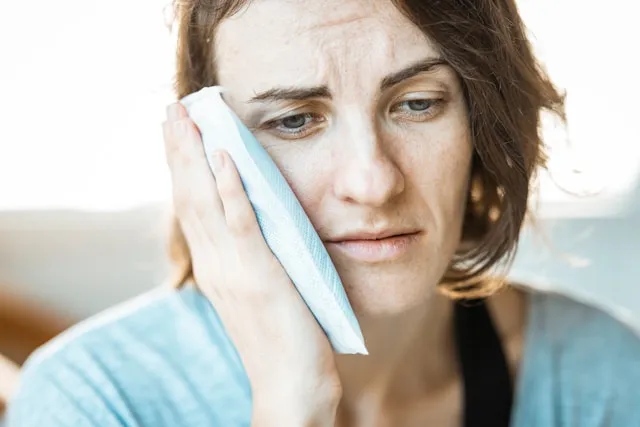Ever stood by your freezer with an ice pack in one hand and a heating pad in the other, wondering which one your back really needs? You’re not alone. This question has been asked by nearly every person dealing with back pain. The truth? Both ice and heat have their place, but the difference lies in when and how you use them.
Let’s cut through the noise. Some people swear by heat. Others never go a day without icing. But experts agree on one thing: there’s no one-size-fits-all answer. What works for your friend might not work for you. Still, we can look at when each method might actually help, and when it might make things worse. Let’s break down when heat helps… and when it hurts in this guide.
Can Heat Make Back Pain Worse?
Absolutely, yes. In certain cases, applying heat can actually increase pain, prolong inflammation, and delay healing.
Here’s what happens behind the scenes:
If you just injured your back, say you lifted a heavy box or twisted wrong while playing with your kids, your tissues might be inflamed. Swelling, redness, and heat are signs of inflammation. Applying more heat on top of that? Bad idea. Why? Because heat dilates blood vessels and pulls in more fluid and inflammatory chemicals into the area.
That means more swelling, more pressure on nerves, and more pain.
This is where people often go wrong. They think heat always soothes. But it’s not always the hero. In fresh injuries, heat can do more harm than good.
TL;DR: In the early stages of injury (first 48–72 hours), heat can make things worse.
A study in Clinical Biomechanics found that while heat helps with chronic pain, it’s not great for fresh injuries. And in the same study, 72% of participants reported at least three hours of pain reduction after just one session of high-temperature pulsed heat therapy, but these were people with ongoing, non-inflammatory back pain. Context matters.
When Not To Use Heat For Back Pain?
Many people misuse heat therapy. It's easy to think it’s safe because it feels good in the moment. But timing and symptoms matter. If you apply heat during these times, you might make your pain worse, not better. So ask yourself: is there visible swelling? Is the pain sharp and sudden? If yes, skip the heat.
Here’s when not to use heat for back pain:
-
Right after an injury (within 48–72 hours): Swelling, bruising, or redness? Skip the heat.
-
Post-surgery recovery (unless advised otherwise): If you’ve had back surgery, your tissues are still inflamed. Heat may slow down healing.
-
If your back feels hot to the touch: That’s your body’s signal to cool down, not warm up.
-
You have an infection or open wound: Heat can make infections spread faster.
-
If you’ve had negative reactions to heat before: Some people feel worse after using heat. If that’s you, don’t push it.
Pro Tip: If the pain is sharp, sudden, or comes with swelling, don’t reach for the heat.
Ice vs. Heat for Lower Back Pain
Not sure what to use? Here’s a simple rule comparing the two and help you decide:
|
Type of Pain/Situation |
Use Ice |
Use Heat |
|
New Injury (within 72 hours) |
✅ |
❌ |
|
Swelling or inflammation |
✅ |
❌ |
|
Chronic pain or stiffness |
❌ |
✅ |
|
Muscle spasms |
❌ |
✅ |
|
Sciatica or nerve related pain |
❌ |
✅ |
|
Preparing for activity |
❌ |
✅ |
|
Pain after prolonged activity |
✅ |
❌ |
If your back is stiff and achy from sitting too long, or you’ve got tight muscles in the morning, go for heat. It relaxes muscle fibers, improves blood flow, and soothes stress-related tension.
But if you twisted your back this morning, and there’s a sharp throb or swelling, ice is your friend. Ice slows things down. It shrinks blood vessels and numbs the area, like a pause button for inflammation.
Still unsure? A good rule: Start with ice, then switch to heat once the swelling subsides and stiffness sets in.
How Each Therapy Actually Works
Choosing the right treatment depends on your symptoms and how long you’ve had them. Let’s look at how both work.
Heat Therapy:
-
Mechanism: Increases blood flow, softens tight muscles, and promotes relaxation.
-
When to use: Chronic pain, tension, or soreness from overuse.
-
Benefits: Loosens muscles, improves flexibility, supports healing in non-inflamed tissue.
Cold Therapy:
-
Mechanism: Narrows blood vessels, reduces inflammation, numbs nerve endings.
-
When to use: Acute injuries, swelling, or pain after sudden strain.
-
Benefits: Reduces swelling, slows nerve signals (less pain), prevents tissue damage.
Used at the wrong time, either one can slow your healing. It’s less about what feels good and more about what your body needs at that stage.
Best (and Safest) Ways to Use Heat for Back Pain
Heat therapy can work wonders, but only when done right. There are several techniques you can try, depending on what’s available and comfortable for you.
Try These Methods:
-
Moist Heating Pads: These go deeper into muscles than dry ones. Use for 15–20 minutes.
-
Warm Baths or Showers: Best for full-back tension or morning stiffness.
-
Heated Gel Packs: Wrap them in a towel. Never apply directly to the skin.
-
Hot Water Bottles: Great for spot-treatment, like the lower back.
-
Microwaveable Towels: Dampen a towel, microwave it for 30–60 seconds, then apply.
Tips to Remember:
-
Always use a layer between the skin and the heat source.
-
Never sleep with a heating pad on.
-
Limit each session to 20 minutes.
-
Try to apply heat before bed or before stretching.
The best way to use heat for back pain is in short bursts, regularly. Don’t crank up the temperature; keep it warm, not hot.
Why Heat Feels Good but Can Make Pain Worse
Many people wonder why heat can make back pain worse, especially when it feels so good at first.
Here's what happens:
-
More blood = more inflammation. When blood vessels open up, they carry more white blood cells and fluids to the injury. This causes swelling.
-
Pressure on nerves increases. Swollen tissues can press on surrounding nerves, worsening pain.
-
Delayed healing. If the tissues stay inflamed, the body can’t start the actual repair process.
Just because it feels nice doesn’t mean it’s helping. It’s sneaky, heat feels comforting. But underneath, the extra fluid and pressure might be making the problem linger longer than needed.
How To Treat Back Pain Without Heat?
Not everyone should or can use heat. If you’re in the wrong phase for heat, or just don’t tolerate it well, don’t worry. There are other effective options:
Safer, Smarter Approaches:
-
Ice therapy: Use it within the first 48–72 hours.
-
Gentle movement: Try walking, stretching, or mobility drills. Avoid bed rest.
-
Physical therapy: Guided exercises from a pro can retrain your muscles.
-
Massage: A Light massage can relax tight tissues and improve blood flow.
-
Posture correction: Adjust how you sit, stand, and move.
-
Core strengthening: Weak core muscles often lead to back pain. Start with basic moves like pelvic tilts and bird-dogs.
And don’t forget: hydration, sleep, and stress levels all play into pain. Chronic stress, for instance, can make your muscles stay tense all day.
Conclusion
Back pain doesn’t have one clear fix. But knowing how and when to use ice or heat can make a big difference in how quickly you recover. Many people wonder, can heat make back pain worse? The answer lies in the timing. Misusing heat, especially when swelling or a fresh injury is involved, can definitely make things worse.
Listen to your body. Try different tools, but track how they make you feel. Don’t rush for heat just because it feels cozy. Your back needs thoughtful care, not guesswork.
Fresh injury? Start with ice.
Lingering tension? Try heat with caution.
And if the pain sticks around too long or keeps coming back? That’s a sign to speak with a professional. Better to treat it right than live with it daily. Your back deserves better than trial and error. Give it the care it truly needs.
Frequently Asked Questions
Can I Use Heat On My Back Every Day?
Yes, if your pain is chronic and there’s no inflammation. Use heat 15–20 minutes, once or twice a day. Just make sure it’s warm, not hot, and take breaks.
What Type Of Heat Is Best For Lower Back Pain?
Moist heat is best, like warm towels or baths. It penetrates deeper into the muscles. Dry heat can work too, but it may dry out your skin over time.
Can Heat Cause Nerve Damage In The Back?
Only if misused. Long or high-temperature exposure can harm skin or nerves. Always set heating pads to low/medium and never sleep with them.
Should I Use Heat After Exercise If My Back Hurts?
If it’s muscle soreness, yes. But if the pain feels sharp or swollen, go with ice. Heat after workouts can help relax tight muscles and aid recovery.
Can I Switch Between Ice And Heat?
Yes , this is called contrast therapy. Start with ice for 10 minutes, then heat for 10 minutes. It helps with pain, stiffness, and circulation.
Reviewed by







